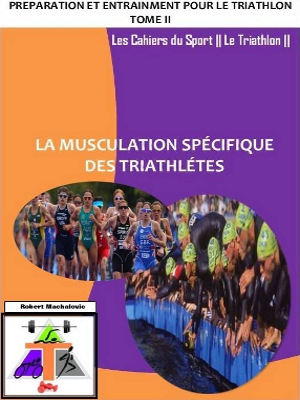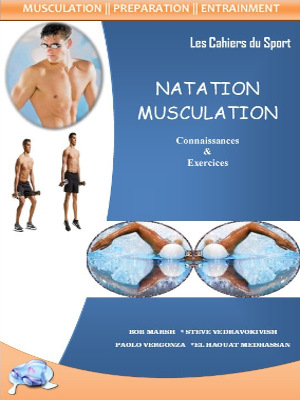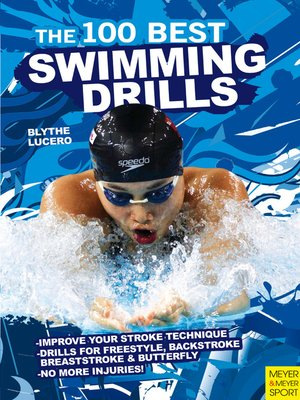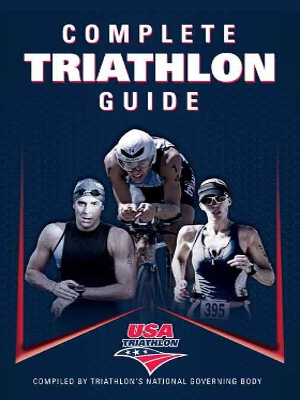nataswim blog
Periodization
Écrit par EL HAOUAT MedHassan
Periodization involves dividing the training plan into smaller parts using the terms mesocycle, macrocycle, and microcycle. These terms are used to establish a hierarchy of training within the overall program. This approach is well established in practice in a wide range of endurance and power sports. Mesocycle : Mesocycle refers to a long-term training phase lasting several weeks to months. In swimming this represents the entire 12-20-week preparation for a major national or international competition. Most commonly, there are two mesocycles a year with peaks for the national swimming championships and then the major international competition (e.g., Olympics, Worlds, etc.) held later in the year (luly-September).
Publié dans
nataswim blog
Tags:
One of the fundamental principles that underpins the periodization of training is that volume of training is increased before the intensity of training. This principle applies to meso-, macro- , and microcycles alike. Most coaches are familiar with the concept that a foundation of aerobic fitness is established early in the mesocycle or competition season. After this initial period of increasing training volume to build endurance, the emphasis of training switches to the development of speed and anaerobic capacities. It is often observed that this base level of fitness can be reestablished fairly quickly (4-6 weeks) in those swimmers with an extensive training background. This has implications for older more mature swimmers who are returning after a break from training or competition. However, it is much more efficient for swimmers to maintain a basic fitness program during the off-season.
Publié dans
nataswim blog
Tags:
The contemporary model of preparing competitive swimmers in a given year is based on the following sequence of training and competition: preseason, early season, competitive season, taper, championship season, and recovery or off-season. For highly trained swimmers the competitive season usually takes the form of domestic competition or international competitions. The championship season typically involves the national championships, often doubling as the national team selection trials, and then the major international competition for that particular year. Once the competition schedule has been established, the training plan can be prepared with the goal of maximizing the performance of the swimmer for the competitive and championship seasons. For international swimmers, the entire season is typically 44-48 weeks in length with a short break permitted after completion of the championship season. The length of each of the different training phases will vary according to the individual circumstances of the swimmer, team, and coach.…
Publié dans
nataswim blog
Plus...
Training by competitive swimmers typically consists of repeated bouts of shorter or longer intervals in a short-course or long-course pool. Intervals span a continuum from longer slower intervals (50-1600 m for developing aerobic or endurance fitness) to shorter faster intervals (15-200 m for developing anaerobic or race pace qualities). The basic prescription of interval training can be simplified to four primary variables: (i) the number of intervals or repeat efforts, (ii) the length/distance of the interval (15 m to continuous swimming), (iii) the intensity (i.e., pace or velocity) of the interval, and (iv) the rest period between intervals (variously formulated as the cycle time or rest period).
Publié dans
nataswim blog
The following is an example of the features of periodization that may encompass a typical 14-week swimming preparation fora national championships or major international meet. Macrocycle 1: aerobic (weeks 1-4) As in most training programs the initial phase involves the development or reestablishment of endurance fitness. This serves as the basis for the subsequent development of aerobic and anaerobic capacities and the functional utilization of these capacities. Functional utilization refers to increased swimming speed at a given metabolic load. Apart from the underlying physiological adaptations, improved endurance will lead to an increased ability to cope with fatigue and more rapid recovery from the stresses of speed training and competition. In particular, the aim is to develop the capacity and efficiency of the cardiorespiratory system.
Publié dans
nataswim blog
A creative approach to the planning of training sessions is essential to maintain an adequate adaptation stimulus. Once the various cycles are organized within the season or yearly plan, the detailing of individual training sessions can begin. Some coaches make the mistake of not properly integrating speed and endurance in the training pro- gram. This is particularly evident in the endurance phase where too great an emphasis on the volume of training may impair speed. It is an oversimplification to think that only low to moderate intensity volume work is undertaken in an "endurance" week or phase, and that only speed work is done in a "speed" week. If insufficient speed work is undertaken during the endurance phase, a swimmer may pay the price later on when they are unable to reproduce race or competitive speeds. Conversely, swimmers may become overloaded and prone to fatigue, illness, and injury if they…
Publié dans
nataswim blog
Basis of Sports Training
Écrit par EL HAOUAT MedHassan
Basis of Sports Training All activities which are part of human behavior were subject to a long-term development. Let us take throwing, which is regarded a basic motor activity, as an example. In the deep past, throwing was necessary for feeding and defense. At present, throwing has lost its importance as one of the above mentioned activities but it is involved in different sports to a great extent (e.g. athletics, handball, baseball, etc.). The task of a prehistoric hunter was to hit the target precisely to get food. The aim of a present-day athlete is to throw the javelin as far as possible. The result of the activity in both examples can be considered a performance. Performance is understood as an extent to which motor task is accomplished. With the prehistoric hunter, performance is evaluated dichotomically: hitting the target or missing and it is not restricted by any rules. In…
Publié dans
nataswim blog
Objectives of Training
Écrit par EL HAOUAT MedHassan
Multilateral Physical Development Athletes need multilateral physical development as a training base as well as overall physical fitness. The purpose is to increase endurance and strength, develop speed, improve flexibility, and refine coordination, thus achieving a harmoniously developed body. We expect athletes with a strong base and a good overall development to improve athletic performance faster and better than those without this foundation. In addition, such athletes will have a superior body form, which increases their self-esteem and reflects a strong personality. Sport-Specific Physical Development Sport-specific development improves absolute and relative strength, muscle mass and elasticity, specific strength (power or muscular endurance) according to the sport's requirements, movement and reaction time, and coordination and suppleness. This training creates the ability to perform all movements, especially those required by the sport, with ease and smoothness. Technical Factors Technical training involves developing the capacity to perform all technical actions correctly; perfecting the…
Publié dans
nataswim blog
Systematic development of the individual components of sports training is a long-term dynamic process, which has a predetermined logical relation. The processes of learning and development components of sports training can be divided into three areas. Physical component is developed in the processes of morpho-functional adaptation. Technical component is learning the processes of motor learning and psychological component is shaped in the processes of psychosocial interaction. A special place is occupied by tactical component which interferes into processes of both motor learning and psycho-social interaction. In very simplified form we can talk about the process of morpho-functional adaptation to increased physical activity (the creation of energy reserves and energy distribution, the activity of various organs, etc.). At the same time you need to learn many new moves, but their acquisition is necessary to rely on principles of motor learning. Psycho-social aspects of sports training interaction are determined by real relationships…
Publié dans
nataswim blog
Exercise : - Load Loading
Écrit par EL HAOUAT MedHassan
The increase in performance generally is related to the achievement of adaptive changes in the organism. Adaptive changes can be achieved by repeated application of Exercise load. The way to achieve adaptive changes in the organism is a systematic repetition of Exercise load. Repeated loads refer to as adaptation stimulus. The principle of adaptive changes is the axis: homeostasis → adaptation stimulus (load) → adaptation. If adaptation stimuli are applied properly, training can be expected to have accumulative effect. If motor activity is carried out in such a way that it evokes desirable current change of human functional activity, and consequently long-term, structural and psycho-social changes, it can be referred to as load. Example : If I run every other night in the park without much planning and adherence to the principles of sports training, sooner or later pass the same track may be quicker, but also feeling more relaxed,…
Publié dans
nataswim blog
Energy for sports
Écrit par EL HAOUAT MedHassan
Metabolic specificity of exercise and training is based on an understanding of the transfer of energy in biological systems. Efficient and productive training program can be designed through an understanding of the process of energy repletion for muscle work of various inensity and duration of load. Terminology Bioenergetics or the flow of energy in a biological system, concerns primarily the conversion of macronutrients-carbohydrates, proteins and fats, which contain chemical energy. Energy emerges with the decomposition of high-energy bonds in such macronutrients which release energy needed to carry out mechanic work. vzniká rozkladem vysoce energetických vazeb high-energy bonds v těchto makroživinách, které uvolňují energii potřebnou k vykonání mechanické práce. Catabolism is the breakdown of large molecules into smaller molecules, associated with the release of energy (e.g. breakdown of glycogen into glucose). Anabolism is opposite of catabolism. It is the synthesis of larger molecules from smaller molecules (e.g. synthesis of proteins from…
Publié dans
nataswim blog
Indicators of exercse load provide information on the condition of organism during training activity. They are sensitive to changes in the size of load. Among the indicators, there are: Heart rate Lactate Oxygen consumption Respiratory exchange ratio (RER)
Publié dans
nataswim blog
Training strength ability
Écrit par EL HAOUAT MedHassan
The ability to resist external resistance with muscle contraction represents a basic principle of developing the complex of strength ability. Muscle contraction is conditioned by many factors. If there is no visible movements of body segments during muscle contraction, this is referred to as static strength (e.g. holding tim in squat when thighs are held horizontally to the ground). On the other hand, if muscle contraction causes a visible movement of body segments by stretching (excentric muscle contraction) or by shortening the muscle (concentric muscle contraction), it is referred to as dynamic strength (e.g. mutual movement of forearm and upper arm during benchpress exercise). The dynamic strength can further be divided into partial manifestations of dynamic strength: Maximal strength is manifested by overcoming high or even limit external resistance at a slow speed with a specific muscle group usually in one repetition (e.g. in benchpress). Explosive strength is manifested by…
Publié dans
nataswim blog
Endurance sports training
Écrit par EL HAOUAT MedHassan
Endurance sports are activities which are performed during longer time interval and which prevailingly use aerobic metabolism involvement. Aerobic metabolism prevails during physical exercise which is longer than than 2-3 minutes at a low, middle or submaximal intensity load. Exercies used are usually locomotions or repeated cyclic movements. Many scientific works proved that aerobic endurance may last for a longer time before fatique appears and that it can last even in the state of fatique. Also recovery rates are highly related to quality of endurance abilities and faster recovery allows the athlete to shorten rest intervals within and between training sessions and increase overall training load. The most recognized model of endurance abilities physiology is the Cardiovascular/Anaerobic model, initially suggested by British physiologists A.V. Hill and associates in the mid-1920s. This model basically posits that a lack of oxygen in working muscles is what ultimately limits exercise performance. The cause…
Publié dans
nataswim blog
Speed abilities
Écrit par EL HAOUAT MedHassan
There are different manifestation of speed in training, e.g. the speed of a sprinter in a 100-meter run, reached javelin release speed, maximum speed of the starting run of the athlete in a long-distance jump, the speed of changing position of the middle player from the middle part of the net into side area, break-free with the ball in basketball etc. Sports performance is conditioned by performing a given movement with maximum speed possible. External manifestation of the resulting speed of both cyclic movement and single-speed movement are always related to as fast carrying out of the movement as possible along defined specific track through muscle contraction. The specificity of movement is given by specific skill in the sports discipline. Manifestations of speed in sports are always characteristic in their maximum intensity. Acyclic movement (throws, casts) can be performed against slight resistance (up to 20 % 1RM). Cyclic movement (sprint)…
Publié dans
nataswim blog
Coordination Abilities
Écrit par EL HAOUAT MedHassan
Coordination ability means an ability to quickly and purposefully perform difficult spatio-temporal movement structures. Within this context, coordination abilities are understood as an externally visible manifestation of the control and regulation processes of the motor activity of the central nervous system. The complex of coordination abilities consists of a group of basic coordination abilities. Basic coordination abilities: Adaptive ability enables modifications of motor activity ob the basis of comparison or anticipation of new or changing conditions during performing motor activity. Balance ability is understood as an ability to keep body or its parts in a relatively stable position. Combinatory ability is understood as an ability to simultaneously put partial movements together into more complex movement structures. Kinesthetic diferentiation ability means an ability to realize kinematic and dynamic features of movement.
Publié dans
nataswim blog
Technical Preparation The aim of technical preparation is to create and improve sports skills. Each sports skill has a given way of solving a motor task (contents of a sports skill) in accordance with the rules of a given sport, biomechanical rules and locomotive possibilities of the athlete which are referred to as technique. Specific individual adjustment of technique by an athlete is referred to as style. Procedure of acquiring motor skills: Sports skills are created on the basis of information on external and internal environment of the athlete and their synthesis into a complex image about the situation (skill) to be solved. Creating such image is carried out on the basis of information acquired from senses (visual, audio, locomototive and positional) – perception. By repeating, perceived situations are gradually being fixed into corresponding perception patterns. Through afferent pathways, files with such information are transfered to CNS where they are…
Publié dans
nataswim blog
Children sports training
Écrit par EL HAOUAT MedHassan
Anyone who performed some sport actively can certainly remember their beginnings and their first coaches. For a child who starts to attend some children sports club at an early age, the figure of the coach means authority. Coaches working with beginning athletes usually determine whether sport shall become part of their entire lives or not. Therefore, the approach and knowledge of the coach is of utmost importance. In children sports training, the coach is faced with many difficulties which he or she must be aware of. The most important difficulties are as follows: Not every top athlete can be a high-quality coach of children. In common practice of sports clubs, youth coaches are recruited among the top athetes of the club. Such coaches start training children without any practical experience and often also without required coach license. Not everyone is able to face this situation because experience which they have…
Publié dans
nataswim blog
The way to controlled training process and meaningful planning of training was long, starting with the first of attempts and errors, leading to scientific based planning which has started to develop during the 19th Century. Developing or training physical abilities has existed, though in a basic form at first, since the ancient times; it was used for Olympic Games preparation or for military purposes. First systematic principles in training were probably used by the Greek athlete Milon who implemented the principle of systematic planning as early as in the 6th Century BC. He determined the training cycle by carrying a bull calf on his back each day until the animal reached maturity. Since the mid-19th century studies on human muscular performance have been appearing and these scientific results were published in the then popular Philosophical Magazine. At the turn of the 19th and 20th centuries, first studies on human fatigue…
Publié dans
nataswim blog
S'inscrire Pour Accéder à la Totalité du Site
©
2000 - 2025
nataswim.
Conseils Sports Coaching Formation
Conseils Sports Coaching Formation




